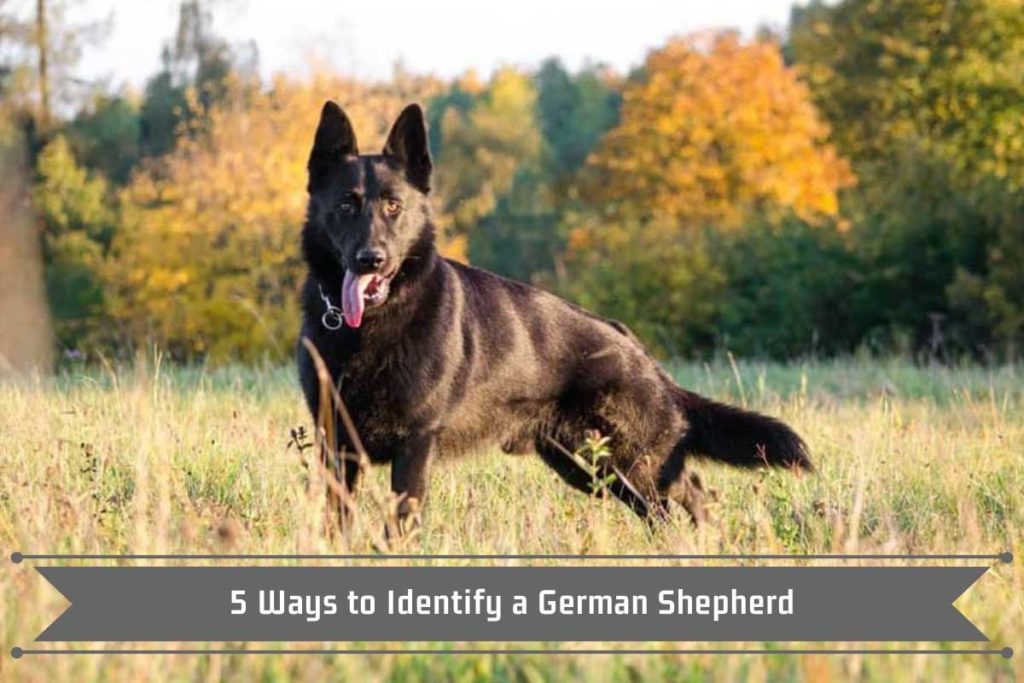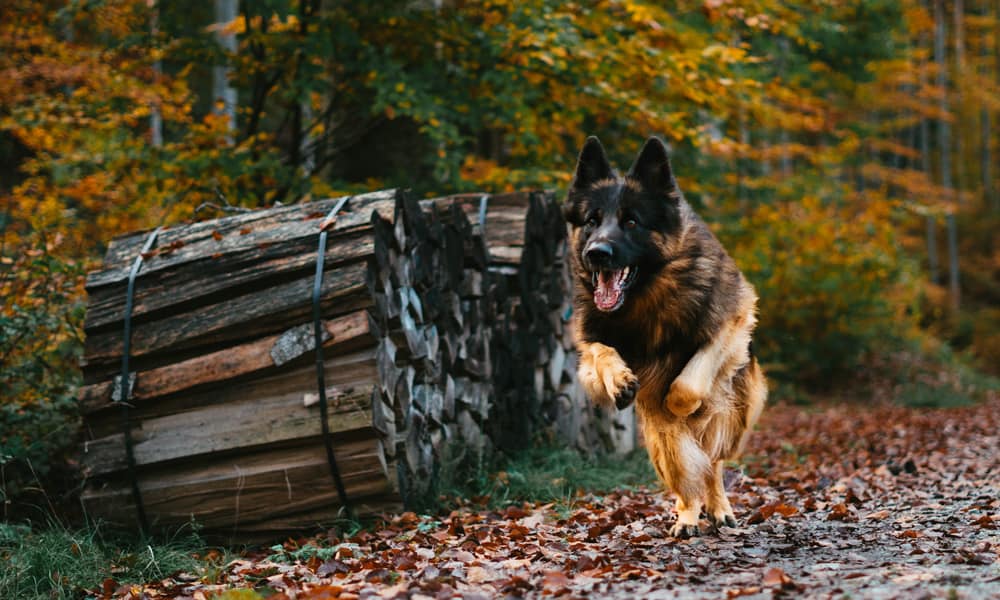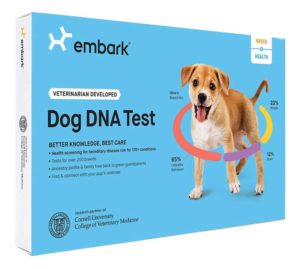
According to the AKC, the German Shepherd is the second most popular dog breed America – and for good reason. If you’ve never personally owned a German Shepherd, odds are you have a close friend or family member who has. This breed has gained its popularity because they are highly intelligent, great working dogs, awesome family pets, and are incredibly obedient and loyal. So, how do you identify the purebred German Shepherd? There are many German Shepherd lookalikes out there that are not the actual breed and there’s nothing wrong with wanting to find a purebred German Shepherd to add to your family – they’re great dogs! We’re going to show you five foolproof ways to identify a German Shepherd from their appearance to their temperament.
Contents
1. DNA Testing
Let’s get the most obvious and ridiculous solution out of the way – testing the dog’s DNA. We say this is a bit ridiculous because you should only need to get a dog’s DNA tested in unique situations. That said there are additional benefits to getting a DNA test for your pup and these tests are out there and readily available.
So, how do you go about getting a dog’s DNA tested? Easy. All you need to do is purchase a kit online. In fact, you can even purchase this Embark Dog DNA Test on Amazon. As you might imagine, purchasing a DNA kit for your dog isn’t exactly cheap but the results might be worth it. Not only can a DNA test identify the breed of your dog but it can also test for a multitude of genetic diseases as well as finding distant and close relatives of your dog from others that have submitted their pup’s DNA.
Once you receive the DNA kit in the mail, carefully read the instructions before use to learn how to accurately take a swab from the inside of your dog’s mouth, package it, and return it to the lab for testing. Although the kit will likely come with two swabs, each kit is only meant to test a sample from one dog. Use both swabs along the inside of the dog’s cheek to ensure the lab gets accurate and consistent results.
These kits usually include sealable plastic bags to place the swabs in and a pre-paid return box or envelope. Mail the swabs back to the lab and wait for your results which generally take about a month’s time. Embark’s Dog DNA Test compares the results to over 250 different dog breeds and will easily identify whether or not your pup is a pure-bred German Shepherd, a mixed breed German Shepherd, or not a German Shepherd at all.
2. Examining the Dog’s Coat
One of the most obvious ways to tell a German Shepherd from other dog breeds is by simply looking at its coat. When we think of the typical German Shepherd, we think of tan coloring with black facial and saddle markings. The coat is typically dense and short and lies close to the body. This more typical look is only one of many of the purebred German Shepherd.
A purebred German Shepherd can have three different varieties of coats, which are the double coat, the plush coat, and the long-haired coat. The double coat is considered the standard of the German Shepherd coats, although many German Shepherds that are kept as family pets have a long-haired coat. Regardless, German Shepherds shed regularly throughout the year and require regular brushing and grooming.
While the typical and often preferred coloring of the German Shepherd is tan and black, look for other variants in coloring. The next most common coloring of the German Shepherd is pure black, along with black and cream, black and red, black and silver, bi-color, blue, gray, liver, sable and white.
3. Other Physical Characteristics

There is a multitude of other physical characteristics that immediately makes a purebred German Shepherd stand apart from other dogs. These include:
- Distinct, pointed ears. These are some of the German Shepherd’s most loved physical features, and for good reason! As German Shepherds grow into their ears as young puppies, you’ll notice their ears going up, back down, with perhaps one standing erect while the other does not. This means your German Shepherd is going through the puberty stage, where they are teething as well as growing and developing cartilage in their ears. The German Shepherd’s ears are long at the base and make the shape of a triangle. Although this is a typical feature of German Shepherds, occasionally a German Shepherd’s ears will not stand erect. This could be due to health, genetics, or grooming routines and can be addressed with your vet if you’re concerned.
Along with the distinctly pointed ears comes the distinct German Shepherd head tilt which fans of this breed also tend to adore. While some believe that this is a sign of intelligence, others believe that German Shepherd’s tilt their head purely so they can see us more clearly – either way, it’s pretty adorable.
- A strong, proportioned build. Part of the reason the German Shepherd makes an excellent working dog is due to its strong, tall build. A typical German Shepherd is up to 26 inches tall and weighs somewhere between 77 and 85 pounds. They’re overall muscular dogs, with a deep and narrow chest and sloping front legs and shoulders. A typical German Shepherd puppy weighs up to 10 pounds in the first month and reaches close to 60 pounds by the time they are six months old.
- A full, long, bushy tail. This is another cherished physical feature of the German Shepherd. When the German Shepherd is resting, their bushy tail tends to hang low to the ground. When they’re alert, the tail is slightly raised with the curve more accentuated.
4. Behavioral Characteristics
Putting aside their physical features, German Shepherds are largely known for certain behavioral characteristics – both positive and negative. These behavioral characteristics include:
- A high energy level. If you’re looking to add a German Shepherd to your family, be prepared for the high energy level that comes along with it. German Shepherds need a ton of daily exercise and preferably a backyard to let off some steam in-between walks. If a German Shepherd is not properly exercised and left alone for long periods of time, they’re likely to become bored which leads to destructive behavior such as chewing, digging, as well as excessive barking.
- A strong sense of loyalty. German Shepherds are notoriously loyal dogs and have a strong bond with their families but don’t expect German Shepherds to immediately bound up to strangers. They can be extremely protective of their families if they feel threatened which means that German Shepherds may not necessarily be the best choice for someone with no experience with dogs. As a German Shepherd owner, you need to be prepared that your dog won’t like every new person they meet and will take a while to warm up.
- A high level of intelligence. German Shepherds are extremely smart, making them excellent working dogs. If the dog in question seems highly trainable, there’s a good chance they have at least some German Shepherd blood in them. You often see German Shepherds doing important jobs like assisting police in drug-sniffing and security and aiding in search and rescue. They’re also fantastic guide dogs for the visually impaired. German Shepherds benefit from training and obedience classes which also help keep your dog stimulated and entertained.
- A sense of possession. As previously mentioned, German Shepherds are extremely protective and loyal dogs, especially when it comes to their families. If your family is looking for a guard dog, a German Shepherd is definitely an excellent option. Due to their sense of possession, German Shepherds are also great dogs for herding sheep. This breed develops a sense of what belongs to them and they’ll quickly pick up on when a potential enemy is approaching. Don’t be surprised if they have difficulty telling a stranger from a real or potential threat. Your German Shepherd may be fantastic with you and your kids but act standoffish or protective around other adults or children. This is where additional training is necessary to make sure that your German Shepherd is not acting unnecessarily aggressive or territorial.
5. Asking Questions

The simplest way to identify a German Shepherd? Ask questions! There are a variety of different sources you can ask about the German Shepherd, including:
- Talking with a breeder. Find a reputable German Shepherd breeder and ask as many questions as you can about the German Shepherd. If you’re considering purchasing your German Shepherd from this breeder, ask to see paperwork showing that both parents are recognized by the American Kennel Club and that the breeder itself is licensed by the American Kennel Club. Ask about the personalities and temperaments of the dog’s parents as well as any notable health concerns. Unfortunately, a breeder may not be completely forthcoming about negative information so really dig deep about the breeder before purchasing your German Shepherd puppy.
- Talking with a German Shepherd owner. Speak with someone that you know has a German Shepherd and ask questions. Don’t be afraid to approach someone you don’t know if you like the look of their dog. That said, exercise caution when doing so as the German Shepherd may not be overly accepting of a stranger approaching their owner. The majority of dog owners will enjoy chatting with you about their dog, and answer any questions you may have, especially if you mention you’re considering adding a German Shepherd to your own family.
- Talking with a veterinarian. Veterinarians can provide all kinds of valuable information about German Shepherds. They’ll can inform you of their own experience with the breed and help you identify physical characteristics. If you already have a dog that you believe to be a German Shepherd but are unsure, ask your veterinarian to give you their opinion on whether they believe the dog to be so.
- Downloading an app. Yes, there’s an app for that! You are now able to download a dog breed identification app to identify a large variety of dog breeds. While this method certainly isn’t foolproof, it can give you an idea of what the breed is, based on typical characteristics. Because the German Shepherd has such distinct characteristics, it shouldn’t be a problem for the app to identify.
Additional Identifying Factors
An additional identifying factor is unfortunately the genetic health concerns that come along with German Shepherds. This is why it’s especially important to work with a breeder who is responsible and honest and won’t try to hide any health conditions in the dog’s lineage in the hopes of making a sale.
German Shepherds are prone to certain health conditions, some more so than other breeds. These health conditions include degenerative myelopathy and hip and elbow dysplasia. Degenerative myelopathy is a condition that can eventually leave your older German Shepherd paralyzed so it’s important to seriously consider these potential illnesses before purchasing your German Shepherd. It’s also important to make sure you have the necessary funds to care for a dog that may suffer from health conditions such as these. Ask your vet about their experience in regards to German Shepherds and whether or not they think this breed would be a good fit for you.
Conclusion
German Shepherd or not, there are so many wonderful breeds of dogs out there that have an incredible amount to offer you and your family. If you have your heart set on one of these majestic pups, there’s nothing wrong with preferring a German Shepherd over another dog. Although German Shepherds may not be the ideal dog for the inexperienced dog owner, they’re a wonderful, loyal, and intelligent companion that makes a great addition to a family.
I grew up in a household that was filled with animals. I believe that my fate as a dog-loving person was sealed in early childhood since my parents owned several dogs of varying sizes and breeds. There was no choice but to take care of and learn about dog habits and the best animal care practices — otherwise, I’d be clueless about how to go about the creatures I was surrounded by day and night.
As a life-long puppy lover, I know a thing or two about dogs and how to go about caring for them in the best way possible. Although I’m not a professionally trained dog behaviorist, trainer, or veterinarian, all of my knowledge and experience with canines comes from a place of love and a deep-rooted passion for dogs and animals in general.
Seeing as dogs kept me company throughout every stage of my life, I decided to follow a different path in my academic life and obtained a Bachelor’s and Master’s degrees in Marketing Management and Digital Advertising, which ultimately allowed me to combine my professional training and personal experience by creating the ultimate dog lover’s resource website! Along with my husband, Dave, I run MySweetPuppy for like-minded dog lovers who want to have a single, clear, and reliable information source about anything and everything related to dogs and their well-being.



